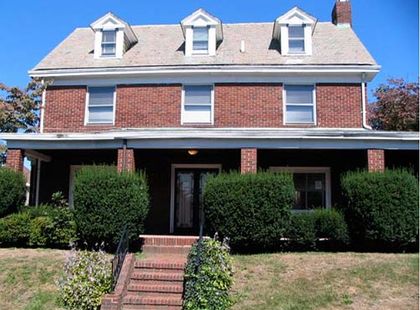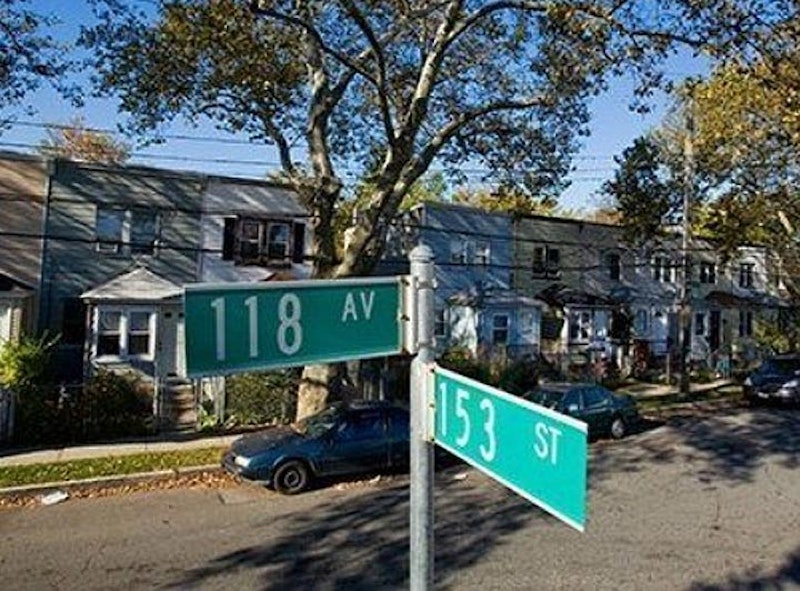I lived on the outskirts of the Broadway-Flushing neighborhood in Queens for 13 years between 1993 and 2007. In contrast to the congested, noisy and crowded downtown Flushing corridor, Broadway-Flushing, clustered on the blocks north and south of Northern Blvd. between Murray St. and Utopia Parkway, features quiet, tree-lined streets and single-family homes in classic styles: English Tudors, colonials, ranches, Cape Cods. When real-estate developers Rickert-Finley Realty built Broadway-Flushing in the first decade of the 20th century, restrictive covenants were placed on the properties that banned front-yard fences, front-yard garages, and flat roofs. The neighborhood was named for the Long Island Rail Road stop that serves it, located at Northern Blvd. between 162nd and 165th Sts. (before 1921, this section of Northern Blvd. was called Broadway). Gradually, some of these restrictions have been eased to reflect the realities of modern life, but with a few exceptions, Broadway-Flushing looks largely the way it was when the homes were first constructed. Cambria Heights, shown in the above photo, is similar.
But trouble has arrived in the early-21st century as McMansions sprung up, and the hedges, lawns and classic architecture that were the hallmarks of the Rickert-Finley Broadway-Flushing have been replaced by ugly fencing and in the worst cases, paved front yards, the better to park station wagons and sport utility vehicles. The situation in the Kissena Park area south of Northern Blvd. east of 162nd St. is even worse, as entire blocks were single family homes were have been razed in favor of ugly brick boxes studded with Fedders air conditioning boxes, fire escapes already rusting soon after completion, and the universal concrete front yards.
Neighborhood associations and watchdog organizations such as the Historic Districts Council have angled for the Landmarks Preservation Commission to officially landmark Broadway-Flushing to prevent teardowns and restrict homeowners’ permission to drastically alter the exteriors of their homes to preserve a unified neighborhood profile. Naturally, some of the area’s homeowners have pushed back, citing their right to do with their properties as they please. The LPC has not afforded Broadway-Flushing landmark designation. The situation in Kissena Park is more dire, as more and more century-old homes fall to the wreckers every year. A similar situation also sees Kissena Park getting less green, because when homes are torn down, the mature trees in front of the properties are cut down too, and lawns are replaced by concrete. In a now infamous column that ran in the Daily News in November 2007, real-estate doyenne Barbara Corcoran recommended that Queens homeowners pave over their front lawns since their homes would be more valuable with parking spaces in front of them.

Located on Depot Rd. and 166th St., this porched house was perched on a hill overlooking the Broadway Long Island Rail Road station. On clear days, especially in winter, it’s possible to see the towers of Manhattan, especially in winter.
It was torn down for two new multi-family homes. They’re much smaller and have none of the élan that the early-20th Century house possessed.

Cookie-cutter buildings like this will replace most single-family residences outside of landmarked areas. Modern-day developers regard lawns as a waste of space for middle-class “affordable” housing, and even McMansions are built with space for parking as a prime concern. On nearby Sanford Ave., a one-family was recently razed along with the four trees that surround it. The trees provided shield against the summer heat. The brick box that replaced it has numerous windows directly facing the sun; those Fedders air conditioners will get a workout. Hardly in line with the green trend that’s been emphasized elsewhere of late.
Do I condemn the increasing number of multi-family units replacing single-family houses? If former Mayor Bloomberg’s prediction about nine million New Yorkers in 2030 is accurate, multi-family units will be an increasing necessity. But do modern developers and architects need to build junk? Walk the streets of Astoria, Ridgewood and Sunnyside, and scan the blocks featuring row upon row of yellow-brick buildings built by Gustave Mathews, with bricks from the old Balthazar Kreischer kilns in Staten Island. Check out the boxy apartment buildings anywhere in the five boroughs that have been kept up by conscientious landlords. That’s multi-family housing at its best, and housing from which modern-day developers of middle-class housing should take their cues.
—Kevin Walsh is the webmaster of the award-winning website Forgotten NY, and the author of the books Forgotten New York (HarperCollins, 2006) and also, with the Greater Astoria Historical Society, Forgotten Queens (Arcadia, 2013)

